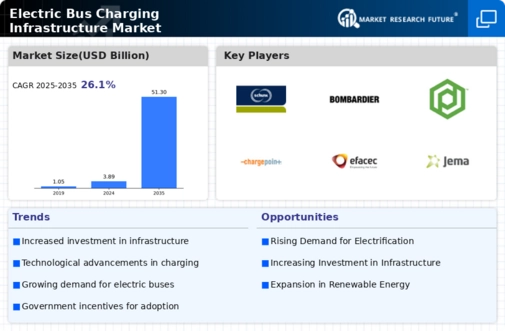Electric Bus Charging Infrastructure Market Summary
As per Market Research Future Analysis, the Electric Bus Charging Infrastructure Market was valued at USD 2.1 billion in 2022 and is projected to reach USD 16.1 billion by 2030, growing at a CAGR of 26.1% from 2023 to 2030. The market is driven by increasing demand for electric vehicles, government policies, and strategic initiatives by major players. The pantograph segment is expected to lead the market, while slow charging will dominate the charging method segment. North America is anticipated to hold the largest market share, followed by Europe and Asia-Pacific.
Key Market Trends & Highlights
Government policies and subsidies are significantly driving market growth.
- Governments are establishing charging stations to promote electric vehicle adoption.
- The EU mandates one charger per ten electric cars by 2030.
- China proposed a USD 1.4 trillion digital infrastructure initiative, including EV charging funding.
- Fleet owners are adopting electric vehicles to reduce fuel expenses and maintenance costs.
Market Size & Forecast
| 2022 Market Size | USD 2.1 Billion |
| 2030 Market Size | USD 16.1 Billion |
| CAGR | 26.1% |
Major Players
Siemens AG (Germany), SCHUNK Group (Germany), ABB (Switzerland), Bombardier Inc (Canada), Kempower OY (US), Daimler AG (Germany), Proterra (US), ChargePoint, Inc (US), EFACEC (Portugal), Shijiazhuang Tonhe Electronics Technologies Co., Ltd (China), Kehua Hengsheng Co., Ltd (China), XCharge Inc (Germany), Alpitronic GmbH (Italy), JEMA ENERGY (Spain), Ekoenergetyka (Poland).







